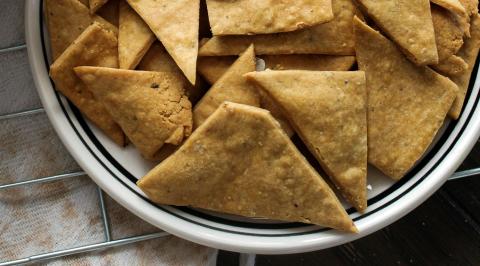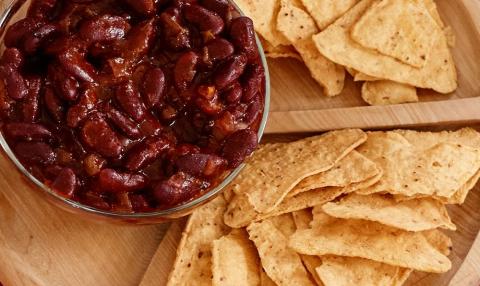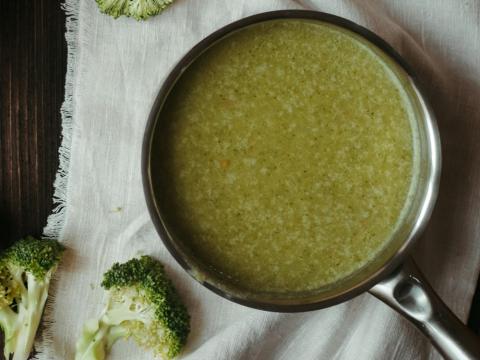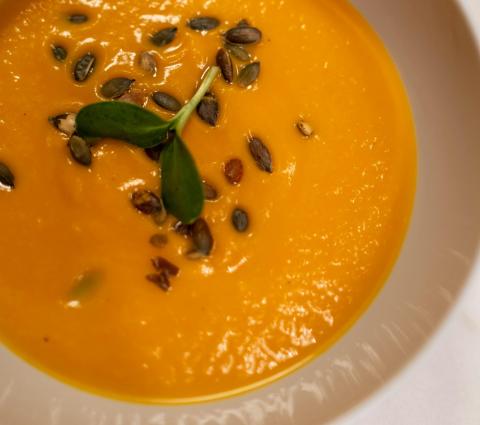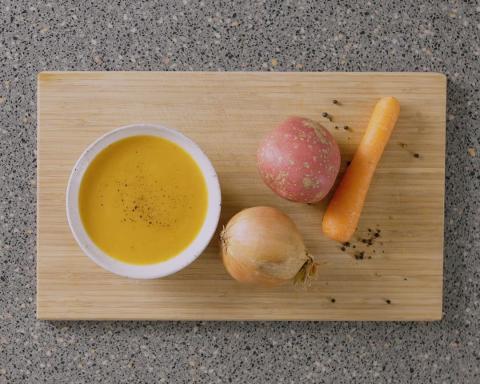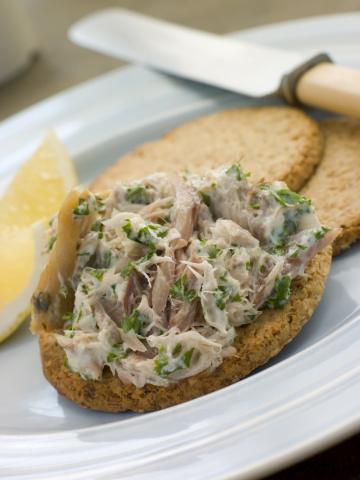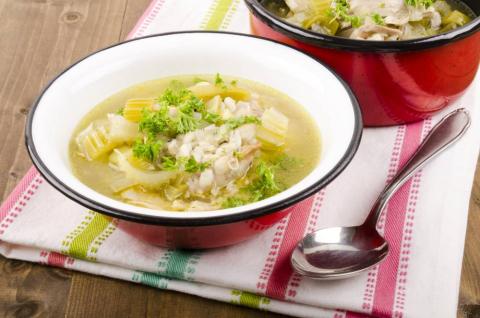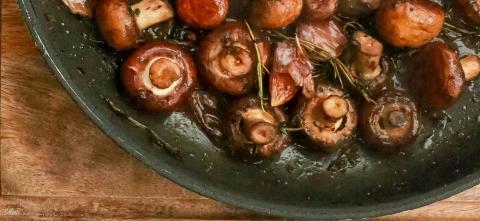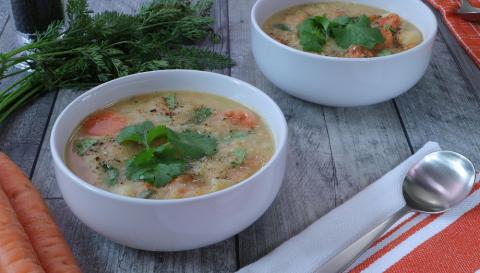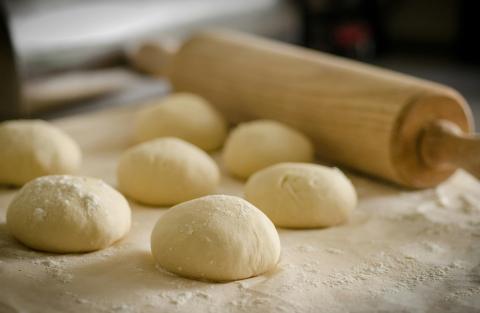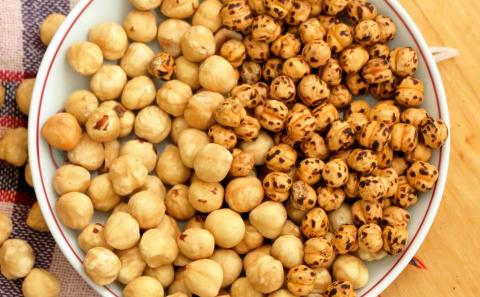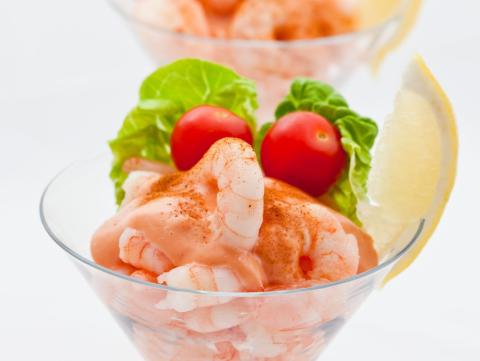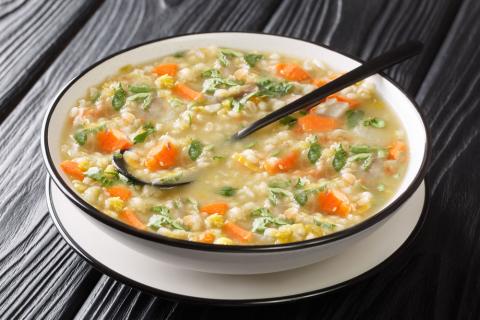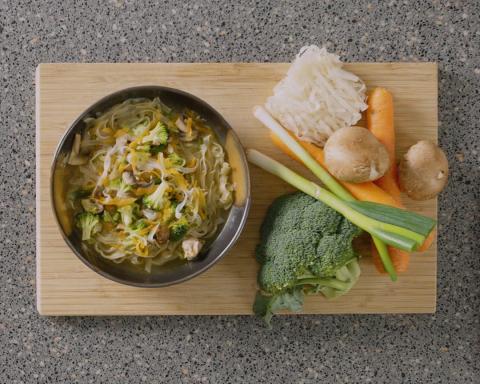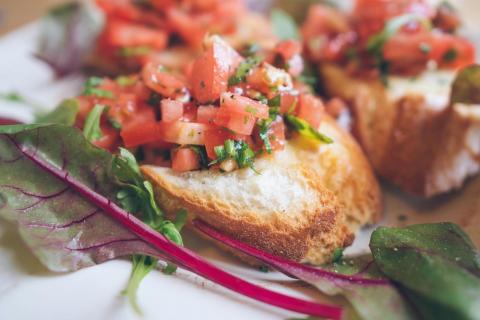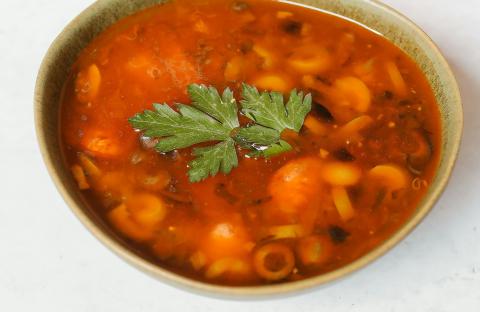- 8 (600g) Chicken Thighs
- 1 Pint (600ml) Water
- 1 (60g) Onion
- 1 Tablespoon (20g) Pearl Barley
- 1 (10g) Chicken Or Vegetable Reduced Salt Stock Cube
- 2 (320g) Leeks
- 1 Stick (30g) Celery
- 1 Teaspoon (1g) Dried Thyme
- (10g) Parsley
- 1 Pinch Ground Black Pepper
Ingredients
Allergy Disclaimer
Always check the label of each ingredient for allergy warnings.
Method
- Peel and chop the onion.
- In a large pan add the chicken thighs, water, onion and barley. Bring to the boil and then reduce heat and simmer for 1 hour.
- Remove the chicken from the pan and remove the skin and bone from each thigh using a sharp knife. Cut the chicken into bite size pieces and return to the pan.
- Wash the celery and leeks then finely chop then add to the pan with the thyme, parsley and stock cube. Stir to dissolve the stock cube, adding more water if required.
- Add pepper to taste and simmer until the vegetables are tender, approximately 20-30 minutes.
Time Saver Tips
Prepare in advance and heat through when required.
Cost Saver Tips
For a super speedy meal later on, why not batch cook this? Let it cool down then keep it in the fridge or freezer. This is a great recipe for leftover chicken. Just remember that you can’t freeze the soup if you use chicken that’s already been frozen and defrosted. No worries if you’ve run out of onions – celery or leeks are a good alternative. You could also use spring onion, too.
Tips for Kids
Try chopping vegetables really small or blend them so your little one can’t spot them – a sneaky but tasty way that could help get your little one eating a little more veg! You could even ask them if they’d like to help you prepare the vegetables. This might make them more likely to want to eat it when it’s ready!
Nutritional Information
Based on a single serving of 269g (% of an adult's reference intake)
Energy
156 kcals ( 8 %)
656 kJ ( 8 %)
Fat
0.8 g ( 4 %)
Saturates
9.1 g ( %)
Sugar
2.7 g ( 3 %)
Salt
0.8 g ( 13 %)
Detailed nutritional information
| Per 100g | Per 269g serving | |
|---|---|---|
| Energy Kcals | 58 | 156 |
| Energy Kj | 244 | 656 |
| Protein | 9.1 g | 24.5 g |
| Total Fat | g | g |
| Saturated Fat | 0.3 g | 0.8 g |
| Carbohydrates | 3.4 g | 9.1 g |
| Total Sugars | 1 g | 2.7 g |
| NSP Fibre | 0.6 g | 1.6 g |
| Sodium | 105 mg | 282 mg |
| Salt | 0.3 g | 0.8 g |
Find out about nutritional labelling
Nutrition labels on the front of packaging
- Most of the big supermarkets and many food manufacturers display nutritional information on the front of pre-packed food.
- Front of pack nutrition labels provide information on the number of grams of fat, saturated fat, sugars and salt and the amount of energy (in kJ and kcal) in a serving or portion of a recipe.
- The labels also include information about reference intakes (expressed as a percentage) which are guidelines about the approximate amount of particular nutrients and energy required for a healthy diet.
- The colour coding tells you at a glance if the food has high (red), medium (amber) or low (green) amounts of fat, saturated fat, sugars and salt.
- The more greens on the label, the healthier the choice
- Amber means neither high nor low, so you can eat foods with all or mostly ambers on the label most of the time.
- Reds on the label means the food is high in that nutrient and these are the foods we should cut down on. Try to eat these foods less often and in small amounts.
Food shopping tips
If you’re trying to decide which product to choose, check to see if there's a nutrition label on the front of the pack. This will help you to quickly assess how your choices stack up. You will often find a mixture of red, amber and green colour coding for the nutrients. So when you're choosing between similar products, try to go for more greens and ambers and fewer reds if you want to make a healthier choice.
 Activities & Play
Activities & Play Behaviour
Behaviour Childcare
Childcare Development & Growing Up
Development & Growing Up Family, Friends & Relationships
Family, Friends & Relationships Feeding Your Baby
Feeding Your Baby Food & Eating
Food & Eating Health & Safety
Health & Safety Mental Health & Wellbeing
Mental Health & Wellbeing Money & Work
Money & Work Online Behaviour & Safety
Online Behaviour & Safety Pregnancy & First Days
Pregnancy & First Days School & Education
School & Education Sleep
Sleep


